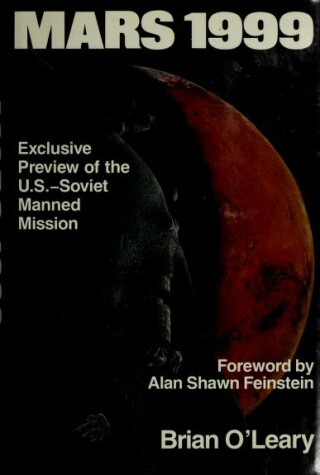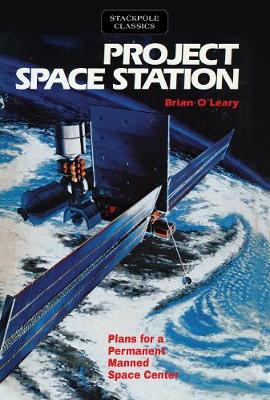Stackpole Classics
2 total works
Almost thirty years after the first human landing on the Moon, the United States and the U.S.S.R. launch separate spacecraft that fly alongside one another toward Mars. Each spacecraft serves as an emergency backup for the other and provides the opportunity for crew exchanges during the tedious 22-month journey. After landing on Phobos--on of the tiny potato-shaped moons of Mars--the crews carry out experiments to determine the safety of landing on the Martian surface. Months later, one astronaut and one cosmonaut board a small, simply designed sortie module, descend to the Martian surface, plant flags, and ascend back to Phobos--all in a matter of hours. A far-out dream? Author Brian O'Leary, a former astronaut, believes it can be a reality if the U.S. and the U.S.S.R. cooperate in space exploration and set goals now for a 1998-1999 mission. In fact, plans have already begun for sending people to Mars. Since the Soviets are clearly interested in Mars, a joint mission would make political, economic, and scientific sense. But a bewildering variety of mission approaches are emerging. In Mars 1999, Brian O'Leary outlines his vision for an exciting approach to a join Mars mission. In a letter included in this book, O'Leary urges the President to give high priority to a Mars voyage. This first in a series of missions would enable us not only to pay for missions but also to fuel a rapidly growing infrastructure on the Moon and on Mars by 2005.
It's happening now-plans are being formulated under the coordination of NASA to launch a permanent, manned space station by the year 1990. Studies surveying user requirements, system attributes, and architectural options have been conducted, and you're on the top of these far-reaching considerations on the next big step taken within space!
Now that the Shuttle and Spacelab are realities, NASA has set sights on a new horizon-a permanent, manned space station in the high frontier. The precedents have been set-Skylab hosted human visits for up to 84 days, and the Soviet's Salyut was and is a temporary base for cosmonaut crew. The differences are the term and scope of space station living and the accomplishments that can be realized with a permanent site and continuous experimentation within its facilities.
Brian O'Leary, writer, astrophysicist, and former astronaut, describes the "tinkermodules" that will be carried to the earth's orbit to be assembled as a space station. His inside track information also lay
Now that the Shuttle and Spacelab are realities, NASA has set sights on a new horizon-a permanent, manned space station in the high frontier. The precedents have been set-Skylab hosted human visits for up to 84 days, and the Soviet's Salyut was and is a temporary base for cosmonaut crew. The differences are the term and scope of space station living and the accomplishments that can be realized with a permanent site and continuous experimentation within its facilities.
Brian O'Leary, writer, astrophysicist, and former astronaut, describes the "tinkermodules" that will be carried to the earth's orbit to be assembled as a space station. His inside track information also lay

